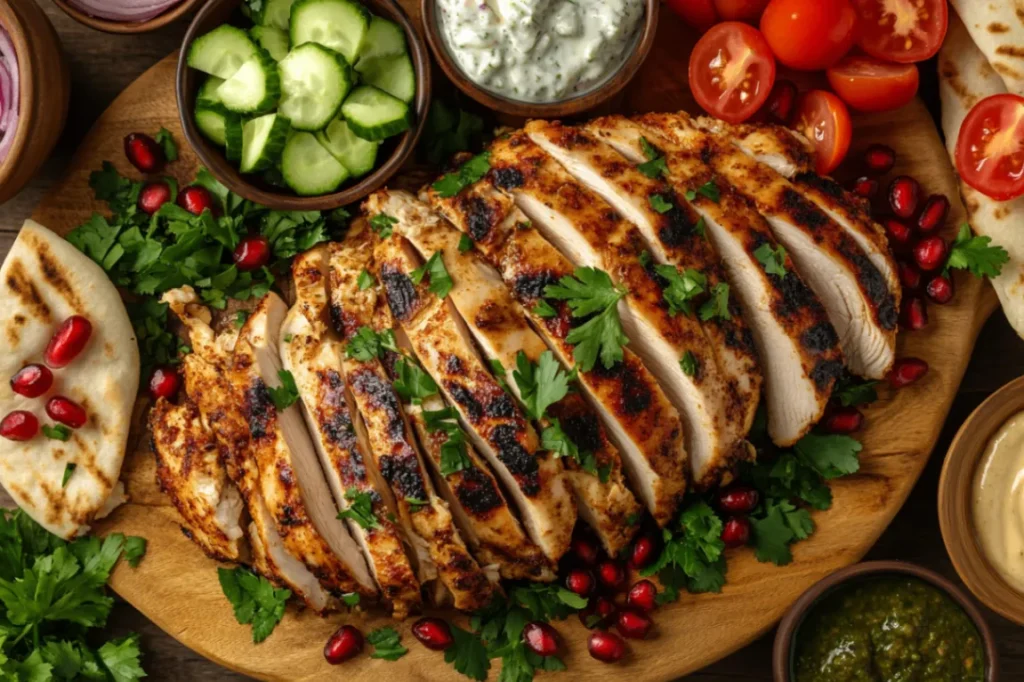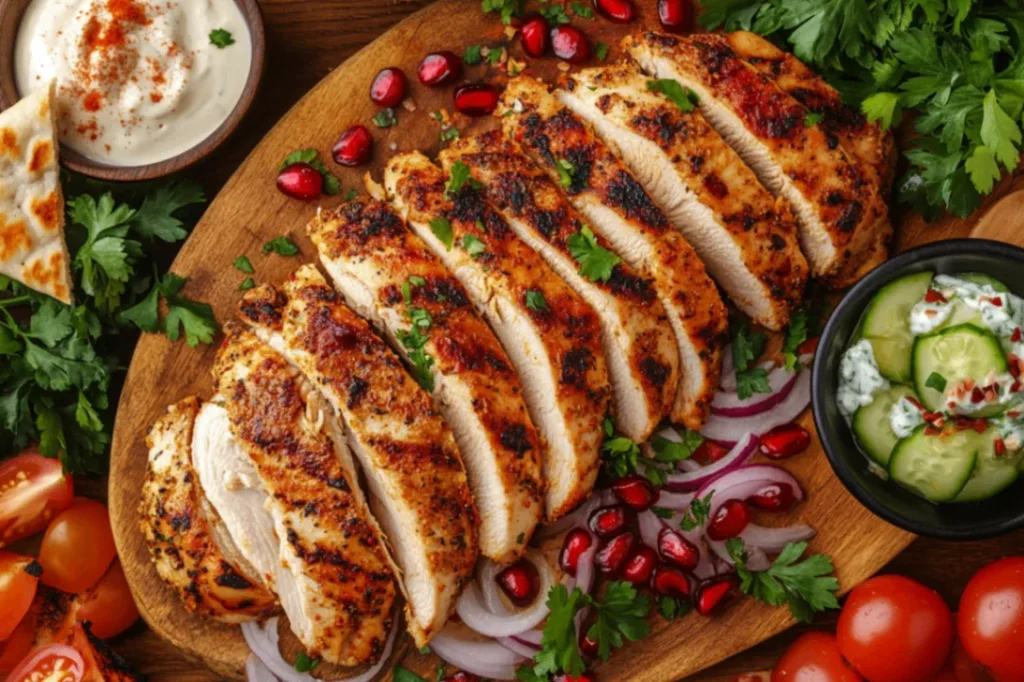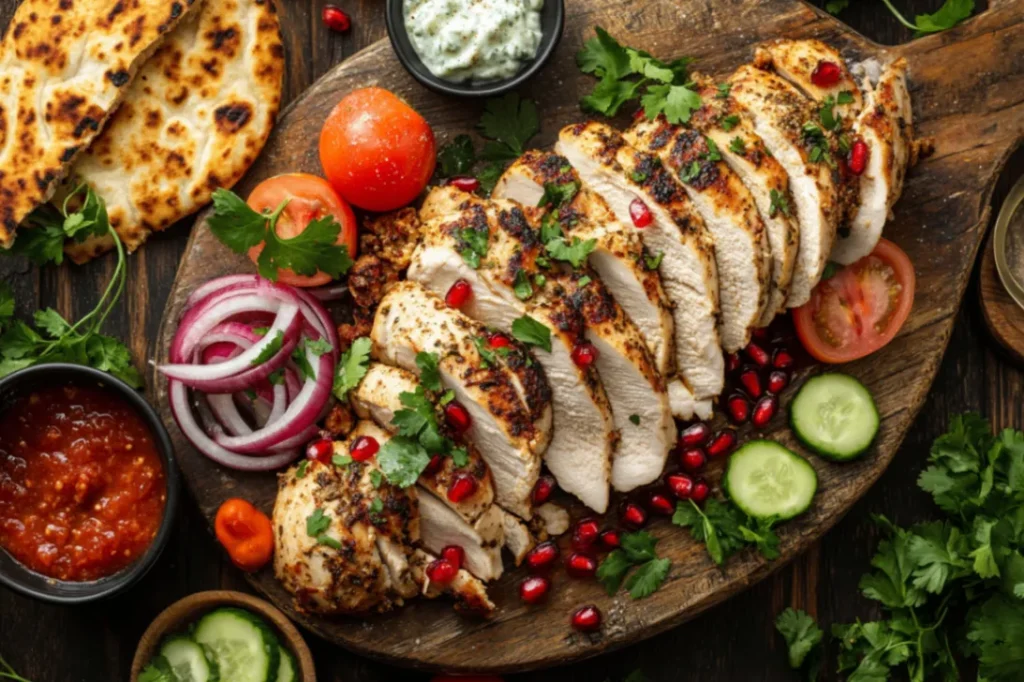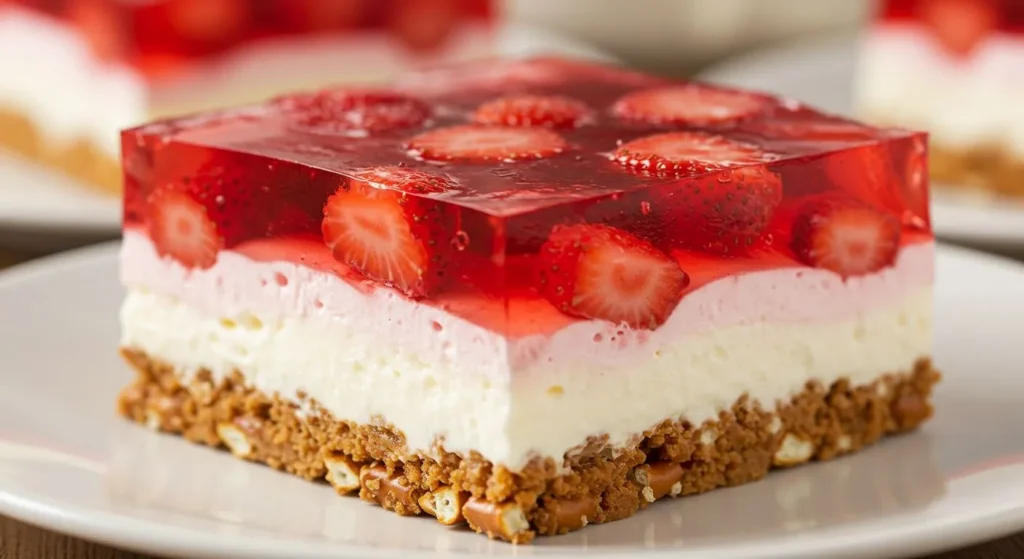
Introduction
There’s something magical about walking down a bustling Middle Eastern street and catching that intoxicating aroma of spiced meat slowly rotating on a vertical rotisserie. The first time I encountered authentic chicken shawarma was during a summer trip to Istanbul, where I watched a weathered chef expertly carve layers of perfectly seasoned chicken from a towering spit. That moment changed everything for me – I knew I had to bring this incredible chicken shawarma rotisserie recipe home to my kitchen.
After years of experimentation and countless conversations with Middle Eastern home cooks, I’ve perfected this chicken shawarma rotisserie recipe that captures all the authentic flavors and textures of the original. This isn’t just another recipe; it’s a culinary journey that transforms simple ingredients into one of the world’s most beloved street foods. Whether you’re hosting a dinner party or simply craving something extraordinary for your family, this chicken shawarma rotisserie recipe will become your new favorite way to elevate ordinary chicken into something spectacular.

Chicken Shawarma Rotisserie Recipe
Master authentic chicken shawarma at home with this detailed rotisserie recipe featuring traditional Middle Eastern spices and expert cooking techniques.
Ingredients
Instructions
- 1In a large bowl, whisk together yogurt, olive oil, lemon juice, and minced garlic until smooth. Add all spices and whisk until well combined.
- 2Add chicken thighs to marinade, ensuring complete coverage. Massage marinade into meat and refrigerate for at least 2 hours or overnight.
- 3Preheat oven to 425°F (220°C). Thread chicken onto skewers or arrange on a rack-lined baking sheet.
- 4Cook for 25-30 minutes, turning once halfway through, until internal temperature reaches 165°F (74°C).
- 5Allow chicken to rest for 5 minutes, then slice thinly and serve with pita bread and accompaniments.
Essential Ingredients for Perfect Chicken Shawarma
Understanding the Key Ingredients and Their Culinary Role
The foundation of any exceptional chicken shawarma rotisserie recipe lies in understanding how each ingredient contributes to the final masterpiece. The star of our marinade is a carefully balanced blend of warm spices that creates the signature flavor profile that makes chicken shawarma so irresistible.
Chicken thighs form the heart of this recipe, and I cannot stress enough how crucial this choice is. Unlike breast meat, thighs remain juicy and tender even after extended cooking, making them perfect for rotisserie-style preparation. The higher fat content ensures the meat stays moist while developing that coveted crispy exterior that defines authentic shawarma.
Yogurt serves as both a tenderizer and flavor carrier in our marinade. The natural acids break down tough fibers while the creamy texture helps spices penetrate deep into the meat. I prefer using full-fat Greek yogurt for its thick consistency and tangy bite that complements the warm spices beautifully.
The spice blend is where the magic truly happens. Cumin, coriander, paprika, turmeric, cinnamon, and cardamom work together to create layers of flavor that develop during the marinating process. Each spice brings its own personality – cumin adds earthiness, coriander provides citrusy notes, paprika contributes color and mild heat, while the warm spices like cinnamon and cardamom add depth and complexity.
Fresh garlic and lemon juice brighten the entire mixture, cutting through the richness of the meat and adding that essential Mediterranean freshness. The combination of these ingredients creates a marinade that not only flavors the chicken but also helps achieve that perfect balance of tender interior and crispy exterior.
Expert Tips for Selecting the Best Quality Ingredients
When shopping for your chicken shawarma rotisserie recipe, ingredient quality makes an enormous difference in the final result. I’ve learned through experience that cutting corners on ingredients often leads to disappointing outcomes, so let me share my secrets for selecting the best components.
Choose organic, free-range chicken thighs whenever possible. The superior flavor and texture are immediately noticeable, and the meat tends to be more tender and flavorful. Look for thighs that are uniform in size – this ensures even cooking and better presentation. Avoid pre-marinated chicken, as commercial marinades often contain excessive sodium and artificial flavors that can mask the authentic taste we’re after.
For yogurt, always opt for whole milk varieties rather than low-fat alternatives. The fat content is crucial for proper marination and helps create that signature creamy texture. Greek yogurt is my top choice because it’s naturally strained and thicker, which means it clings better to the meat and doesn’t make the marinade watery.
Spice quality is paramount in this recipe. Whole spices that you grind yourself will always provide superior flavor compared to pre-ground alternatives. If you must use pre-ground spices, purchase them from stores with high turnover and check expiration dates carefully. The aroma should be strong and fragrant – if your spices smell weak or musty, they’ll produce lackluster results.
Fresh produce makes a significant impact on the final dish. Choose firm, heavy lemons with bright yellow skin for maximum juice content. Garlic should be firm with no green shoots, and onions should be heavy for their size with no soft spots. These details might seem minor, but they contribute to the overall excellence of your chicken shawarma rotisserie recipe.
Smart Substitutions and Creative Alternatives
Understanding substitutions is essential for making this chicken shawarma rotisserie recipe accessible regardless of dietary restrictions or ingredient availability. Over the years, I’ve discovered numerous alternatives that maintain the dish’s integrity while accommodating different needs.
For those avoiding dairy, coconut yogurt provides an excellent substitute for traditional yogurt. Choose unsweetened, full-fat varieties for best results. The slight sweetness of coconut actually complements the warm spices beautifully, though the flavor profile will be subtly different from the original.
Chicken breast can replace thighs if you prefer leaner meat, but you’ll need to adjust cooking times and methods. Pound the breasts to even thickness and reduce cooking time by about 25% to prevent drying out. Consider adding extra olive oil to the marinade to compensate for the lower fat content.
Spice substitutions can help when certain ingredients aren’t available. Allspice can replace cardamom in a pinch, though use half the amount as it’s more potent. Ground ginger works as a substitute for fresh in the marinade, using about one-third the amount. If you can’t find sumac, extra lemon zest provides similar tartness with a different flavor profile.
For those following specific dietary protocols, this recipe adapts beautifully. Paleo and Whole30 followers can use coconut yogurt and ensure all spices are compliant. Keto dieters will love the high fat content and virtually zero carbs. The recipe is naturally gluten-free, making it perfect for those with celiac disease or gluten sensitivity.

Mastering the Preparation Process
Initial Preparation and Essential Cleaning Tips
The success of your chicken shawarma rotisserie recipe begins long before the chicken hits the heat. Proper preparation and cleaning techniques ensure food safety while setting the foundation for exceptional flavor development.
Start by thoroughly cleaning your chicken thighs under cold running water, then pat them completely dry with paper towels. This step is crucial because excess moisture prevents proper browning and can dilute your marinade. I like to place the dried chicken on a clean cutting board lined with paper towels for a few minutes to ensure all surface moisture is removed.
Trimming excess skin and fat is important for both appearance and cooking consistency. Leave some skin on for flavor and to prevent the meat from drying out, but remove any loose pieces or excessive fat deposits. Use kitchen shears for clean, precise cuts that won’t tear the meat.
Prepare your workspace systematically to ensure smooth cooking. Gather all spices and ingredients before beginning, and measure everything into small bowls. This mise en place approach prevents scrambling for ingredients mid-process and ensures you don’t forget any components of your marinade.
Clean and sanitize all surfaces that will come into contact with raw chicken. Use separate cutting boards for meat and vegetables, and wash your hands thoroughly between handling different ingredients. These basic food safety practices are essential when working with poultry and will become second nature with practice.
Step-by-Step Cooking Instructions with Professional Secrets
Now comes the exciting part – transforming your prepared ingredients into an authentic chicken shawarma rotisserie recipe that rivals any street vendor. I’m going to share professional techniques I’ve learned from Middle Eastern chefs that make all the difference.
Creating the perfect marinade requires patience and attention to detail. In a large bowl, whisk together yogurt, olive oil, lemon juice, and minced garlic until smooth. Add all spices – cumin, coriander, paprika, turmeric, cinnamon, cardamom, salt, and pepper – whisking constantly to prevent clumping. The mixture should be aromatic and well-combined with no visible spice pockets.
Marinating technique is crucial for flavor penetration. Add chicken thighs to the marinade, ensuring each piece is completely coated. Massage the marinade into the meat with your hands, working it into every crevice and fold. This physical manipulation helps break down proteins and ensures even flavor distribution throughout the chicken.
Marinating time significantly impacts flavor development. While the minimum is 2 hours, I recommend marinating overnight for best results. The longer marination allows the yogurt’s enzymes to tenderize the meat while spices penetrate deeply. Cover the bowl tightly with plastic wrap and refrigerate, turning the chicken once or twice during marination.
The cooking process requires attention to temperature and timing. Preheat your oven to 425°F (220°C) for conventional ovens or 400°F (200°C) for convection. Thread marinated chicken onto skewers or arrange on a rack-lined baking sheet. Cook for 25-30 minutes, turning once halfway through, until internal temperature reaches 165°F (74°C).
Professional finishing techniques elevate your chicken shawarma rotisserie recipe from good to extraordinary. During the last 5 minutes of cooking, brush the chicken with any remaining marinade mixed with a tablespoon of honey. This creates a beautiful glaze and adds depth of flavor. Allow the chicken to rest for 5 minutes before slicing to ensure juices redistribute throughout the meat.

Common Mistakes and How to Avoid Them
Even experienced cooks can stumble when making chicken shawarma, so let me share the most common pitfalls I’ve encountered and how to avoid them in your chicken shawarma rotisserie recipe.
Over-marinating is surprisingly common and can actually harm your final result. While marinating overnight is ideal, leaving chicken in acidic marinade for more than 24 hours can make the meat mushy and unpleasant. The acids in yogurt and lemon juice break down proteins, but too much breakdown creates an undesirable texture.
Temperature control issues frequently ruin otherwise perfect chicken shawarma. Cooking at too high heat causes the exterior to burn before the interior reaches safe temperature, while too low heat results in tough, dry meat. Use a reliable meat thermometer and aim for 165°F (74°C) internal temperature. The chicken should rest for several minutes after cooking to allow juices to redistribute.
Inadequate seasoning often stems from fear of over-spicing, but chicken shawarma should be boldly flavored. Don’t be timid with your spice blend – the chicken can handle robust seasoning, and the flavors will mellow during cooking. Taste your marinade before adding chicken and adjust seasonings as needed.
Skipping the resting period after cooking is a mistake that compromises both flavor and texture. Allowing the chicken to rest for 5-10 minutes after cooking helps juices redistribute throughout the meat, resulting in more tender, flavorful chicken. Use this time to warm your pita bread and prepare accompaniments.
Serving and Final Touches
Creative Presentation Ideas That Wow Your Guests
The presentation of your chicken shawarma rotisserie recipe can transform a simple meal into a memorable dining experience. I’ve discovered that authentic Middle Eastern presentation techniques combined with modern plating ideas create stunning results that impress family and friends alike.
Traditional serving style involves slicing the chicken into thin strips and arranging it on a large platter with warm pita bread, fresh vegetables, and various sauces. Create height and visual interest by mounding the chicken in the center and surrounding it with colorful accompaniments. Garnish with fresh herbs like parsley or cilantro for a pop of color and freshness.
Individual plating works beautifully for dinner parties or special occasions. Warm pita bread can be artfully arranged on individual plates with a portion of sliced chicken, a dollop of tahini sauce, and a small salad of diced tomatoes, cucumbers, and red onions. Drizzle with pomegranate molasses or a squeeze of lemon for an elegant finishing touch.
Family-style serving encourages sharing and creates a warm, communal atmosphere. Arrange all components on a large wooden board or multiple platters, allowing guests to build their own wraps. Include small bowls of different sauces, pickled vegetables, and fresh herbs so everyone can customize their chicken shawarma rotisserie recipe to their preferences.
Modern fusion presentations can elevate your shawarma to restaurant quality. Try serving the chicken over a bed of seasoned rice pilaf, alongside roasted vegetables, or even as a protein topping for a Mediterranean-inspired salad. These presentations maintain the authentic flavors while offering contemporary appeal.
Perfect Pairings and Recommended Side Dishes
The beauty of a well-executed chicken shawarma rotisserie recipe lies in its versatility and ability to complement a wide variety of sides and accompaniments. I’ve spent years perfecting combinations that enhance rather than compete with the star of the show.
Traditional Middle Eastern sides create an authentic dining experience. Tabbouleh, with its fresh parsley, tomatoes, and bulgur, provides a light, refreshing contrast to the rich, spiced chicken. Hummus and baba ganoush offer creamy textures that complement the meat perfectly, while their nutty flavors enhance the overall Middle Eastern theme.
Rice dishes make excellent companions to chicken shawarma. Fragrant basmati rice cooked with whole spices like cardamom and cinnamon echoes the flavors in the chicken while providing a neutral base. Rice pilaf with toasted almonds and dried cranberries adds textural interest and subtle sweetness that balances the savory spices.
Fresh vegetable accompaniments are essential for cutting through the richness of the marinated chicken. A simple salad of diced cucumbers, tomatoes, and red onions dressed with lemon juice and olive oil provides refreshing crunch. Pickled turnips or cucumbers add acidity that brightens the entire meal.
Sauce selection can make or break your chicken shawarma rotisserie recipe presentation. Tahini sauce, made from sesame paste, lemon juice, and garlic, is the classic choice. Tzatziki offers a cooling contrast, while harissa provides heat for those who enjoy spicier flavors. Offering multiple sauce options lets diners customize their experience.
Storage Tips and Reheating Advice for Best Results
Proper storage and reheating techniques ensure your chicken shawarma rotisserie recipe maintains its quality and safety for future meals. I’ve developed these methods through years of meal prep and leftover management.
Immediate storage is crucial for food safety. Allow cooked chicken to cool to room temperature within two hours of cooking, then refrigerate in airtight containers. Properly stored chicken shawarma will maintain quality for 3-4 days in the refrigerator or up to 3 months in the freezer.
Portioning for storage makes future meals more convenient. Divide chicken into meal-sized portions before storing, and consider separating the meat from any vegetables or sauces. This prevents sogginess and allows you to reheat only what you need.
Reheating methods significantly impact the final quality of your leftover chicken shawarma. The oven method produces the best results – wrap chicken in foil with a splash of chicken broth or water to prevent drying, and heat at 350°F (175°C) for 10-15 minutes until heated through. Microwave reheating works for quick meals but tends to make the chicken less crispy.
Freezing techniques extend the life of your chicken shawarma rotisserie recipe considerably. Wrap individual portions tightly in plastic wrap, then place in freezer bags with dates labeled clearly. Thaw overnight in the refrigerator before reheating for best texture and flavor retention.
 DINNER
DINNER LUNCH
LUNCH CAKE
CAKE BREAKFAST
BREAKFASTFor more amazing recipes, be sure to check out our other sections to explore a variety of ideas that will enrich your cooking experience. Each section offers its own unique flavors to ensure a delightful culinary journey:
- Easy and Quick Recipes: A collection of dishes that guarantee delicious meals with minimal effort and time.
- Healthy Recipes: Discover healthy and delicious options that fit your lifestyle.
- Desserts: A diverse selection of sweets that will add a special touch of sweetness to your table.
- Lunch Recipes: Tasty lunch ideas that you can easily prepare to delight your family.
- Dinner Recipes: Delicious and easy-to-make recipes that will make your dinner a memorable occasion.
Frequently Asked Questions
Q: Can I make this chicken shawarma rotisserie recipe without a rotisserie or special equipment? A: Absolutely! While traditional shawarma uses a vertical rotisserie, this recipe is designed for home kitchens using standard ovens. You can achieve excellent results by cooking the marinated chicken on a rack-lined baking sheet at 425°F (220°C) for 25-30 minutes, turning once halfway through. For even better results, try using a grill or cast-iron skillet to achieve some of that characteristic char.
Q: How long should I marinate the chicken for the best flavor? A: For optimal flavor development in your chicken shawarma rotisserie recipe, marinate the chicken for at least 2 hours, but overnight (8-12 hours) produces the best results. The yogurt and lemon juice need time to tenderize the meat while the spices penetrate deeply. However, don’t exceed 24 hours as the acids can make the meat mushy.
Q: What’s the best way to tell when the chicken shawarma is properly cooked? A: The most reliable method is using a meat thermometer – the internal temperature should reach 165°F (74°C). Visually, the chicken should have a golden-brown exterior with no pink remaining in the thickest parts. The juices should run clear when the meat is pierced with a fork. Properly cooked chicken shawarma will be tender and easily shreddable.
Q: Can I make this recipe dairy-free or accommodate other dietary restrictions? A: Yes! This chicken shawarma rotisserie recipe is highly adaptable. For dairy-free versions, substitute coconut yogurt for regular yogurt. The recipe is naturally gluten-free and works well for paleo, keto, and Whole30 diets. For lower sodium versions, reduce the salt and use low-sodium chicken broth if needed for moisture during reheating.
Q: What are the best accompaniments to serve with chicken shawarma? A: Traditional accompaniments include warm pita bread, tahini sauce, fresh vegetables like cucumbers and tomatoes, and pickled vegetables. Rice pilaf, hummus, tabbouleh, and tzatziki also pair beautifully. The key is balancing the rich, spiced chicken with fresh, acidic elements that cleanse the palate between bites.
Conclusion: Your Journey to Shawarma Mastery
Creating an authentic chicken shawarma rotisserie recipe at home is more than just following instructions – it’s about embracing the rich culinary traditions of the Middle East while making them accessible in your own kitchen. This recipe represents years of refinement and countless conversations with home cooks who shared their family secrets with me.
The beauty of this chicken shawarma rotisserie recipe lies in its perfect balance of complex flavors and simple preparation. Once you master the marinade and understand the cooking techniques, you’ll find yourself returning to this recipe again and again. It’s become one of my most requested dishes at dinner parties, and I know it will become a beloved staple in your home as well.
I encourage you to make this recipe your own by adjusting spices to your family’s preferences or experimenting with different serving styles. The foundation is solid, but there’s plenty of room for creativity and personal touches. Document your variations and share them with friends – food is meant to bring people together, and this chicken shawarma rotisserie recipe certainly achieves that goal.
Take the time to source quality ingredients, be patient with the marinating process, and don’t be afraid to taste and adjust as you go. Cooking is an art that improves with practice, and each time you make this recipe, you’ll discover new nuances and techniques that make it even better.
Please try this recipe and share your experiences in the comments below. I love hearing how different families adapt these techniques to their own kitchens and traditions. Your feedback helps me continue improving these recipes and sharing the joy of authentic Middle Eastern cuisine with home cooks everywhere.






